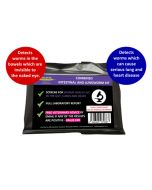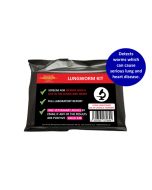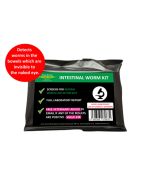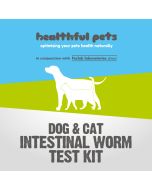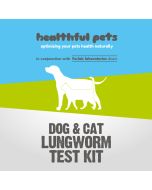
We often get asked - how frequently should I test for worms? In this blog we cover some guidelines
Pets can be infected with worms and not show any signs - particularly in the early stages. Worms in pets can cause the following symptoms:-
- diarrhoea
- digestive disturbances,
- bloating and wind
- coughing / severe lung disease
- weight loss, poor condition, anaemia and IBD (Inflammatory Bowel Disease)
For further information on the above please read this blog, which goes into much more detail.
Chemical worming products contain chemicals designed to kill parasites, however it may result in adverse reactions in sensitive pets. This can include ill-effects on the liver, kidneys, bowels, gut flora, nerves and immune system. Following a regular maintainence programme is an alternative and screening can help to prevent significant and sometimes serious damage to the body occurring, as a result of these parasites going undetected for any period of time.
Frequency of Testing
Please note that following a natural worming programme is no guarantee that your dog or cat is clear because the worms present may be immune to the products used.
Worms can appear as mature, egg-laying adults within as few as 15-32 days from being picked up as eggs or larvae by your animal. Many worms are invisible to the naked eye - which means they are not seen even though they are there. In the same way that chemical wormers offer no ongoing protection against internal parasites between doses, there is nothing to stop your animal picking up a worm burden the following day after a screen.
The ONLY way to be sure that your pet is worm free, and the control measures in place are working is to SCREEN REGULARLY.
There are no set guidelines and it is dependent on the natural intestinal hygiene / worming programme that you are following and the guidelines set by the manufacturer.
Adult dogs
Ideally as a minimum, worm count testing should take place every 3 months for adult dogs. However, many owners choose to do both worm and lungworm together, some do this every 2 months, 3 months or 6 months.
Question- my dog is raw fed - do I need to test more frequently? There should be no need to test more regularly than the current recommended times. If an animal is feeding (scavenging) on a raw carcass of a sheep for example, then more regular testing would be advised but for those feeding raw (purchased or home produced), the standard times would apply unless they have concerns prior to their next test date.
Puppies
Puppies should be tested much more frequently , initially every 4 weeks until 20 weeks, then at 26 weeks, then every 3 months thereafter. Puppy test kits for Pooled litters should be tested at 2 weeks old and then tested individually every 4 weeks. If you decide to continue pool litter testing at the 4 week stage because of affordability / personal preference, it is important to treat the whole litter should results come back positive.
Dogs in pregnancy and whelping
It is different for dogs in pregnancy and whelping. This is because Roundworm and Hookworm can be passed from the bitch to the unborn pups. Pregnant bitches should ideally be tested from between every 40-45 days and 2 weeks post whelping.
Lungworm
The frequency of Lungworm testing should be based on risk factors and prevalence in your area. Feclab (our laboratory partner) recommend every 6 weeks due to the lungworm life cycle for those NOT following a prevention programme.
Giardia
Common Signs that Giardia is present:
- Giardia infection in dogs / cats may lead to weight loss
- Chronic intermittent diarrhoea
- Fatty stool
- The stool may range from soft to watery
- Infected dogs /cats tend to have excess mucus in the faeces
- Vomiting may occur in some cases
It is important to note that not every Dog / Cat will show all the clinical signs of Giardia.
Giardia can be present within your animal, but they may be asymptomatic and yet still contagious (your animal may be spreading the infection but showing no symptoms). On this basis, the giardia screen is often undertaken either at the onset of potential symptoms, or once annually to confirm that the animal is not a carrier. Please note that this home screen test is only appropriate for dogs and cats.
